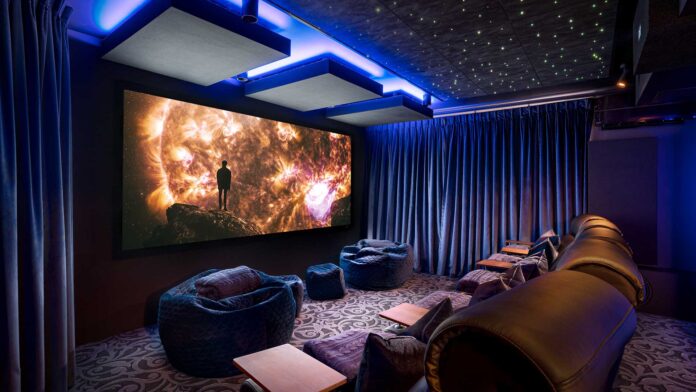Ready to convert your living room into a mini movie theatre? If that’s the case, you’re in luck! We’ve got all of the tips you need to create the perfect home theatre – without taking up too much space. So sit back, relax, and enjoy the show (of tips).
Maximizing Home Theatre Room Space

Maximizing the space you have available for a home theatre can be a challenge, but it’s possible when you plan ahead and make smart choices. Depending on the size of your room and budget, there are a few things to keep in mind when deciding how much space to allot for your home theatre.
A good rule of thumb is to allow each person at least 24-36 inches of seating from both sides, so estimate according to the number of people in your household or people who will watch regularly.
You also need to allow some extra space around the seating area so that viewers can walk around without bumping into furniture – aim for approximately 3 feet between walls and chairs or couches.
Your screen should be placed 8-15 feet away from the primary seating display, allowing everyone an unobstructed view without too much light reflection or audio distortion. The screen size will depend on the pixel distance of each row; experts recommend multiplying this by three then subtracting one half inch (1/2) per foot away from the screen.
Keep in mind that when choosing ACME furniture like theater chairs or couches, low profile styles tend to work best and won’t obstruct viewers line of sight from any seat in the room. Placement against walls is optimal and allows for additional wall mount features like speakers, shelving and more if desired.
Finally, incorporate ambient lighting such as recessed lighting fixtures on dimmers as this will help create moods along with highlighting architectural details within the space.
Understanding Home Theatre Room Requirements
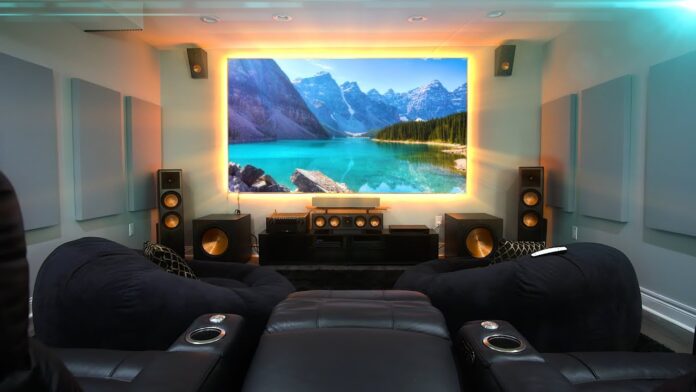
Understanding the room requirements for creating an optimal home theatre experience is essential in order to design a space that truly immerses movie-watchers in the action on screen. Home cinemas of different sizes present their own challenges, but the general principles for building a great home theatre are universal.
Screen Size:
The size of the screen will have an impact on your seating, viewing distance and overall sound quality. Experts recommend that your screen should be no more than one-third of your viewing distance from you. So if you’re sitting 8 feet away from the screen, then your screen needs to be at least 2.5 feet wide and 4 feet tall – with even larger screens being better!
Seating:
Depending on how many people you want to be able to accommodate, you’ll need to factor this into the size of your room as well as how much space is available between seats. Ideally, all viewers should be at least 5 feet away from each other and at least 10 feet away from the wall containing the television or projector.
Sound Quality:
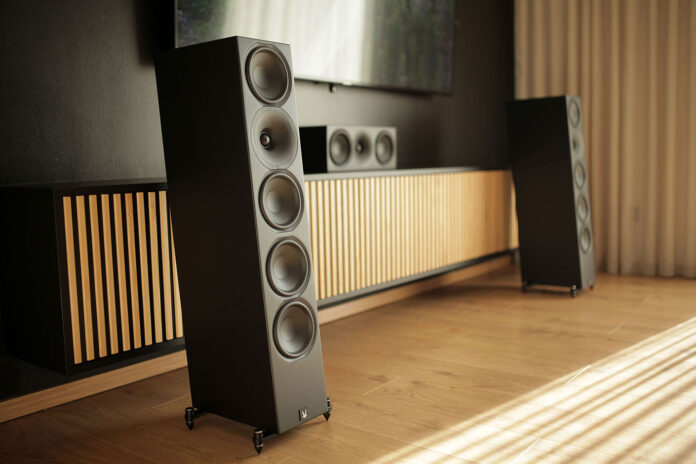
To get great sound in a small home theatre, it’s important to choose speakers with a low frequency response (LFR) of 60Hz or lower and ensure that each one is placed against walls or corners for optimal reverberation time. Additionally, adding acoustic insulation materials such as acoustic panels or foam tiles can help reduce unwanted echo and background noise significantly.
Ambient Lighting:
The lighting level in a home theatre should always be kept low enough so that it doesn’t distract from the movie playing on screen but doesn’t make it difficult for viewers to find their way around either.
Adding sconces or dimmable lights that don’t emit too much brightness can help create an ambient atmosphere conducive for movie watching without detracting from achieving optimal picture quality.
Home Theatre Room Audio and Visual Considerations

Creating a home theatre is an exciting undertaking, but it can be overwhelming when faced with the amount of space needed for the project. To ensure you have adequate room for your home theatre installation, consider these audio and visual factors.
Sound: It’s important to introduce soundproofing materials into your setup to reduce noise leakage and reverberation. A home theatre room should have sound panels on walls and ceilings, in addition to carpets and heavy furniture such as couches to absorb sound.
An ideal configuration will also include dampening materials behind the screens where bass vibrations are most likely to occur. To ensure that you get the best sound out of your main speakers, they should be two or three rooms away from other components in the system as well as arranged in a semi-circular arc shape pointed away from any walls or corners.
Visuals: When connecting high definition video sources with any TV or projection setup, like cables and lamps, keep distances short to minimize signal degradation over distance and prevent picture distortion due to long cable runs within your home theatre room.
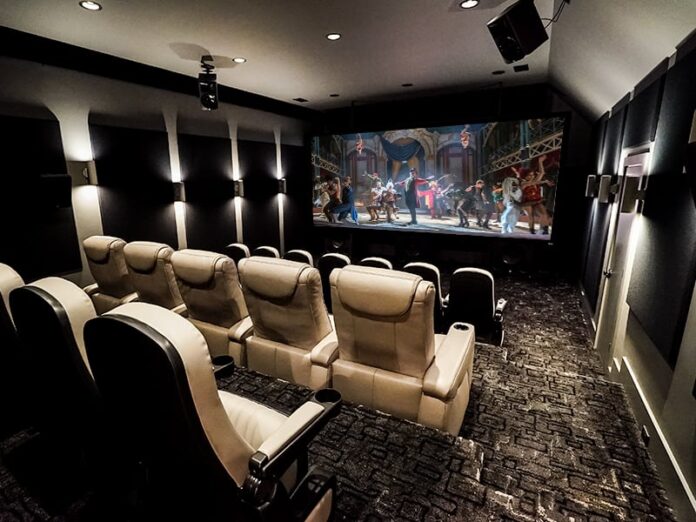
Additionally, make sure that no external exterior light can enter the room while movie viewing. Optimal lighting levels should be determined by eliminating typical shadows from curtains in order to improve contrast ratios of displayed images on screen without sacrificing eye comfort level during extended viewing time.
Lastly, it is helpful for easier system administration if all components are connected via a receiver’s central control panel instead of running individual cables throughout space between devices – this also ensures optimal picture size with less undesired distortion on screen from exposed wires running through walls or cabinets adjacent to projection display layout.
Conclusion
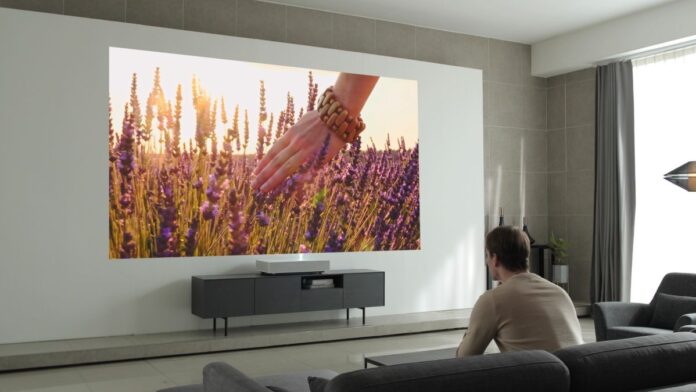
At the end of the day, the perfect home theatre setup depends on your budget, the size and shape of the space, and your personal preferences. When it comes to seating, consider how many people you plan to entertain simultaneously. If you’re looking for a luxurious space filled with plush furniture, investing in high-end seating is a must.
Consider upgrading your sound system to give you a cinema-quality experience at home – but don’t skimp on sound dampening materials; this will help minimize any outside noise seeping into your movie night.
Adding extra lighting and accessories should be done with care – keep in mind that too much extra color or patterns can be distracting when watching movies – so choose those pieces wisely! And when it comes down to actually building the room – reach out to a professional team who can handle all of the hard work for you and get it done correctly.

